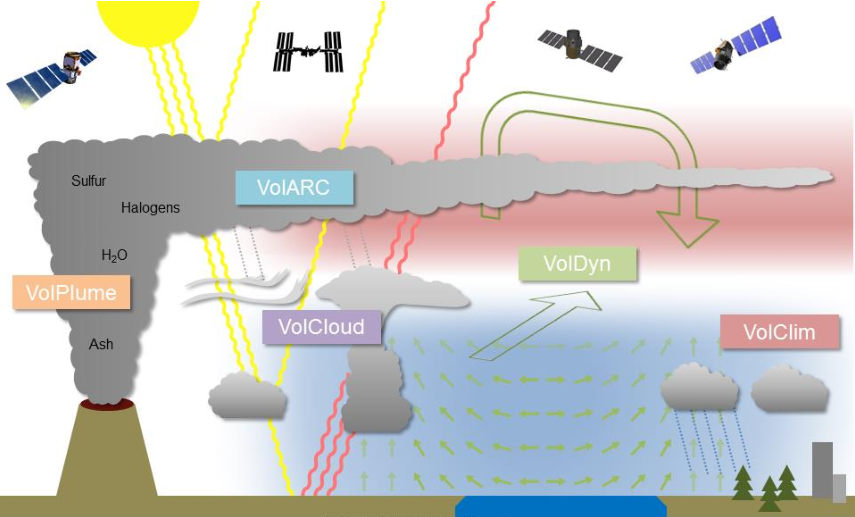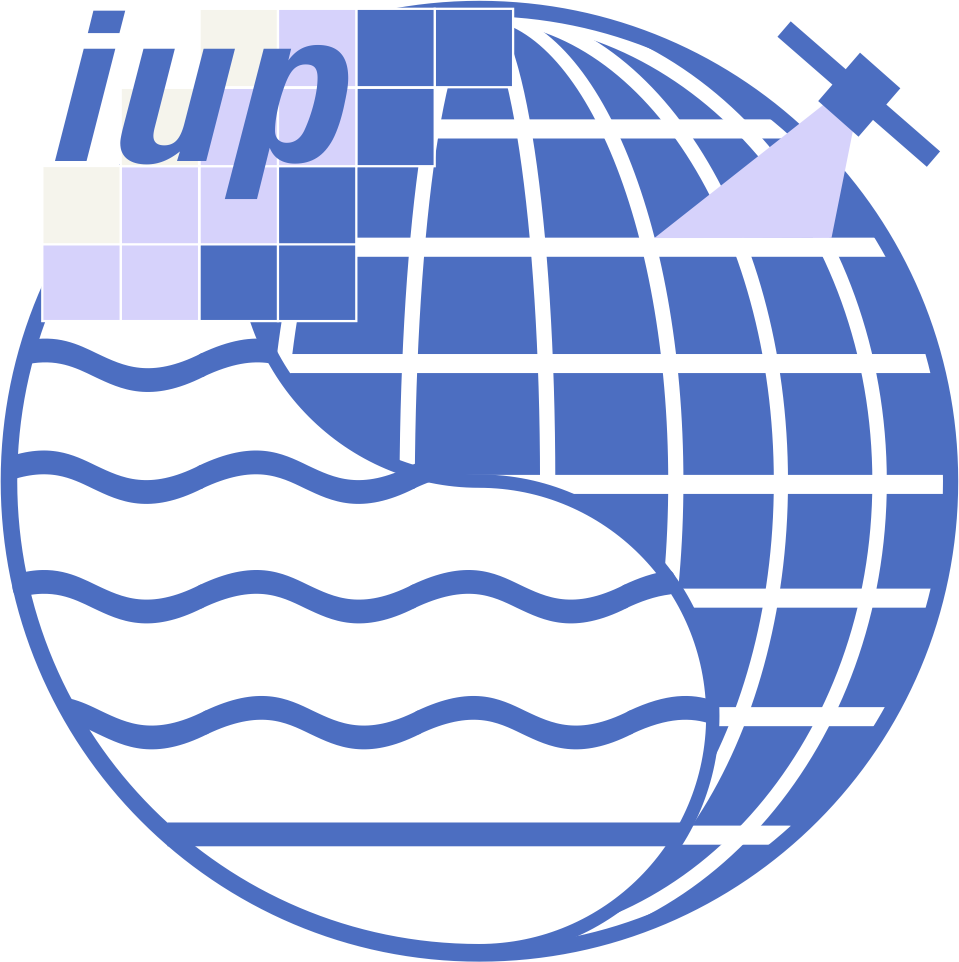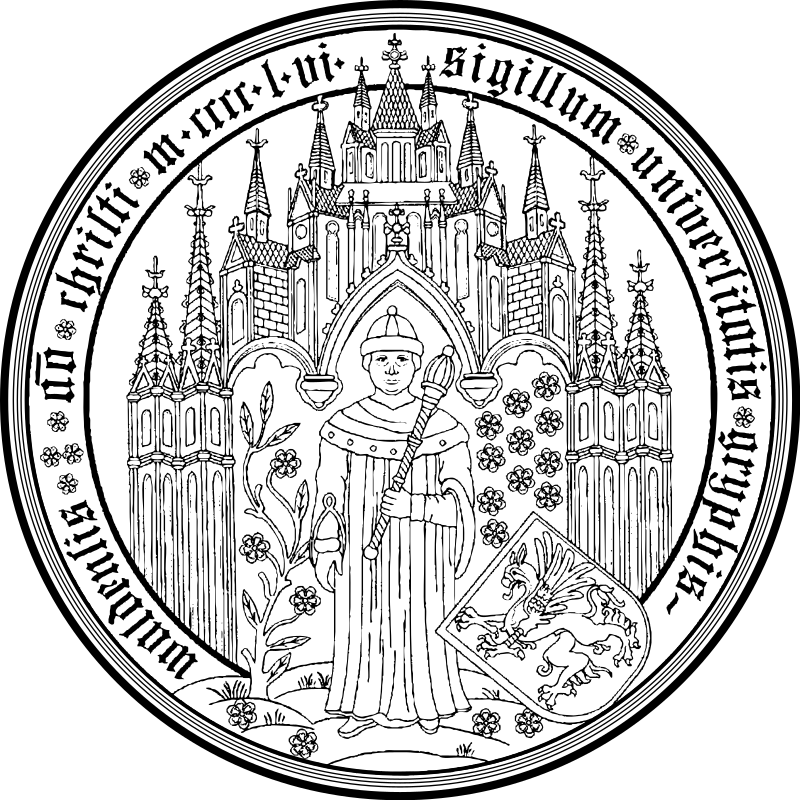About VolImpact
An ability to reliably predict and anticipate future changes to the climate system depends on the adequacy of our understanding of the processes involved in climate change. Explosive volcanic eruptions are unique natural experiments that provide unprecedented insight into many of these key processes. Understanding how the climate system responds to volcanic forcing not only tests our understanding of processes determining climate change, it also facilitates the interpretation of past climate records, and thus motivates long-standing interest in volcanic effects on the climate system.
The overarching goal of VolImpact is to improve our understanding of how the climate system responds to volcanic eruptions. It achieves this objective by building on and exploiting important recent advances in models and measurements.
For more information, the official website of the project can be visited in
www.uni-greifswald.de/volimpact.
Scientific projects

The ambitious research program of the VolImpact research unit is beyond the capabilities of a single research group, because it requires expertise in a variety of complementary disciplines; including aerosol microphysical modelling, cloud physics, climate modelling, global observations of trace species, clouds and stratospheric aerosols.
Therefore, VolImpact is formed by 5 different scientific projects: VolPlume, VolARC, VolCloud, VolDyn, VolClim. They study from volcanic plume evolution to its impact on surface climate:
§ VolPlume
Volcanic plume evolution and injection profiles (PI Bernhard Vogel) will focus on the initial plume development in the first few hours to days of a volcanic eruption by combining state-of-the-art atmospheric modelling and satellite remote sensing.
The project will create the important capability to quickly carry out similar studies for future volcanic eruptions.
This includes both the modelling framework and the satellite data retrieval algorithms. The project will also provide some of the model development and initial conditions relevant for the entire research unit.
§ VolARC
Constraining the effects of volcanic aerosol on radiative forcing and stratospheric composition (PI Christian von Savigny) will address the direct radiative effects of volcanic aerosols in the stratosphere. This project aims at:
- Quantifying the temporal variability of stratospheric aerosol extinction and PSD as well as radiative forcing using available satellite data sets and state of the art modelling capabilities.
- Improving current aerosol microphysical modelling capabilities to better link observed SO2 emission and SAOD and thereby constraining volcanic SO2 emission, e.g., of Pinatubo.
§ VolCloud
Cloud response to volcanic eruptions (PI Johannes Quaas) will treat the cloud response to volcanic eruptions due to aerosol-cloud interactions and cloud adjustments making use of a range of ICON simulations as well as of satellite data. Two adjustment effects are investigated:
- The microphysical response of clouds to the volcanic aerosol, for liquid and ice clouds.
- The response of thermodynamic profiles and the subsequent alteration of cloud distributions and properties (together with VolDyn and VolClim). This also includes the alteration of stratospheric water vapour.
§ VolDyn
Volcanic impacts on atmospheric dynamics (PI Matthew Toohey) will investigate the impact of volcanic eruptions on the dynamics of the atmosphere. It will focus on building a mechanistic understanding of the dynamical responses to the direct radiative effects of volcanic aerosol, and the sensitivity of these responses to the structure of the forcing.
The area of focus includes the mesosphere, stratosphere and troposphere, and the project will integrate results from other projects of the research unit which help to define the structure and uncertainty range of volcanic forcing based on observations and detailed modelling.
§ VolClim
Volcanic impact on surface climate (PI Claudia Timmreck) will investigate the impact of volcanic eruptions on surface climate. The central goal of VolClim is to develop a conceptual understanding how volcanic eruptions influence tropical hydroclimate which help to estimate impacts of future eruptions. The unique combination of the highly resolved ICON-ESM with the volcanic forcing generator EVA and advanced statistical methods will allow assessing how important specific eruption characteristics and the background climate state are for the volcanic influence on tropical hydroclimate. ICON-ESM model results will be jointly analysed with the entire research unit.
Participants
VolImpact is constitued by 7 different participant institutions: IUP (University of Bremen), University of Greifswald, Max Planck Institute for Meteorology (MPIM), Karlsruhe Institute of Technology (KIT), University of Hamburg, University of Leipzig and GEOMAR Helmholtz Centre for Ocean Research Kiel.






